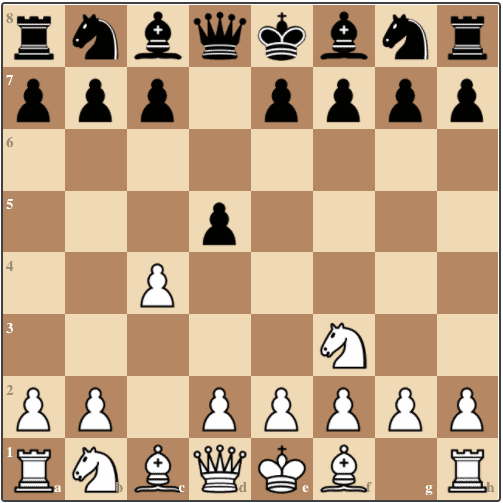

Qxf6 gxf6 and Black has two cool bishops to compensate for the pawn structure. Qxe5 Qc8Ī "principal" position arises after 9. Rad1 Re8 and the e5 push gives Black a small advantage: 13. So, where can White improve on this whole sequence? Suppose he castles short: 9. Nh4 Rab8.īut Black has (again, as mentions) 12.Nd7 after which I'd say it's equal. So - following the plausible line gives, 4.Nxc6 5. There's also 4.Nf6 but as it frequently leads to transpositions, let's put it aside for now. So it's all about evaluating how bad and is 4.Nxc6 5. Bb5 is so horrible for black that it is probably just lost already.Ĭatfriend: 4.Bd7 is certainly playable, although Black loses his main compensation in the Qxd4 variation - the bishop pair. Qxd4 and I always wonder when will someone try 4. He leaves further analysis to others, and concludes by saying that although the sacrifice of the piece may be unsound, yet it will be found to yield a dashing attack, perhaps as good in its way as the celebrated 'Muzio'".ġ.e4 e5 2.Nf3 d6 3.d4 exd4 4.Qxd4 Nc6 5.Bb5 Bd7 6.Bxc6 Bxc6 7.Nc3 Nf6 8.Bg5 Be7 9.O-O-O O-O 10.Rhe1 h6 11.Bh4 Re8 12.Qc4 Bd7?(12.Nd7 Jansa vs J Lechtynsky, 1982)13.e5 1-0 ♗g5, and White's two rooks must come quickly into action. Black may play 6.♕e7 or 6.♕d7, if the latter, White can retort with 7. ♕xf3 with two pieces in the field, a good, free position, and threatening mate on the move. "RJ Barnes of Wellington, NZ draws attention to a novelty arising from a variation in the Philidor Defence: The variation runs thus:ġ. GrahamClayton: An interesting piece from the "Queenslander" newspaper, dated 14 October 1893: Almost every good move by Black was one of the most natural in the position, and White's sins weren't great.

What the game shows is that even with non-optimal play, at times, without any clear tactical mistakes by White, Black could use a few standard maneuvers to obtain advantage without much thought or brilliant concepts. Rfa1 Rd7 0-1 Here my opponent lost on time. An example of a blitz game not exactly in this variation (1.e4 e5 2.Nf3 d6 3.d4 exd4 4.Nxd4 g6 5.Nc3 Bg7) but close in spirit to many of the positions arising from it:ġ. It has its disadvantages, but one thing to be said for it is that it's very efficient at punishing White for opening mistakes. I always return to the Larsen variation of the Philidor defence.

But each time, with a different goal" J.J. I play with black here but i dont know how to gain the lost pawn.Ĭhesswonder: Is there any refutation for this variation?.Ĭatfriend: "We always return to our first love.

REFINE SEARCH: White wins (1-0) | Black wins (0-1) | Draws (1/2-1/2)Ĭhesswonder: Hi everyone! Please anlyze this variation!! Wroclaw vs City of Berlin / Julius Mendheim City of Berlin / Julius Mendheim vs MagdeburgĢ4. Morphy vs Duke Karl / Count Isouard, 1858Ģ3. Explore this opening | Search for sacrifices in this opening.


 0 kommentar(er)
0 kommentar(er)
